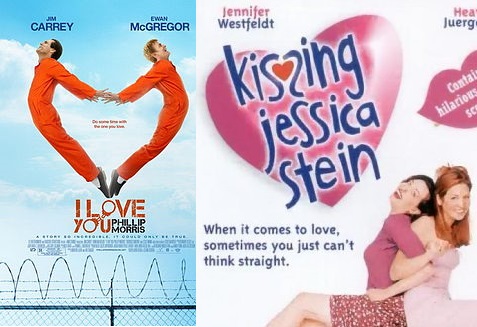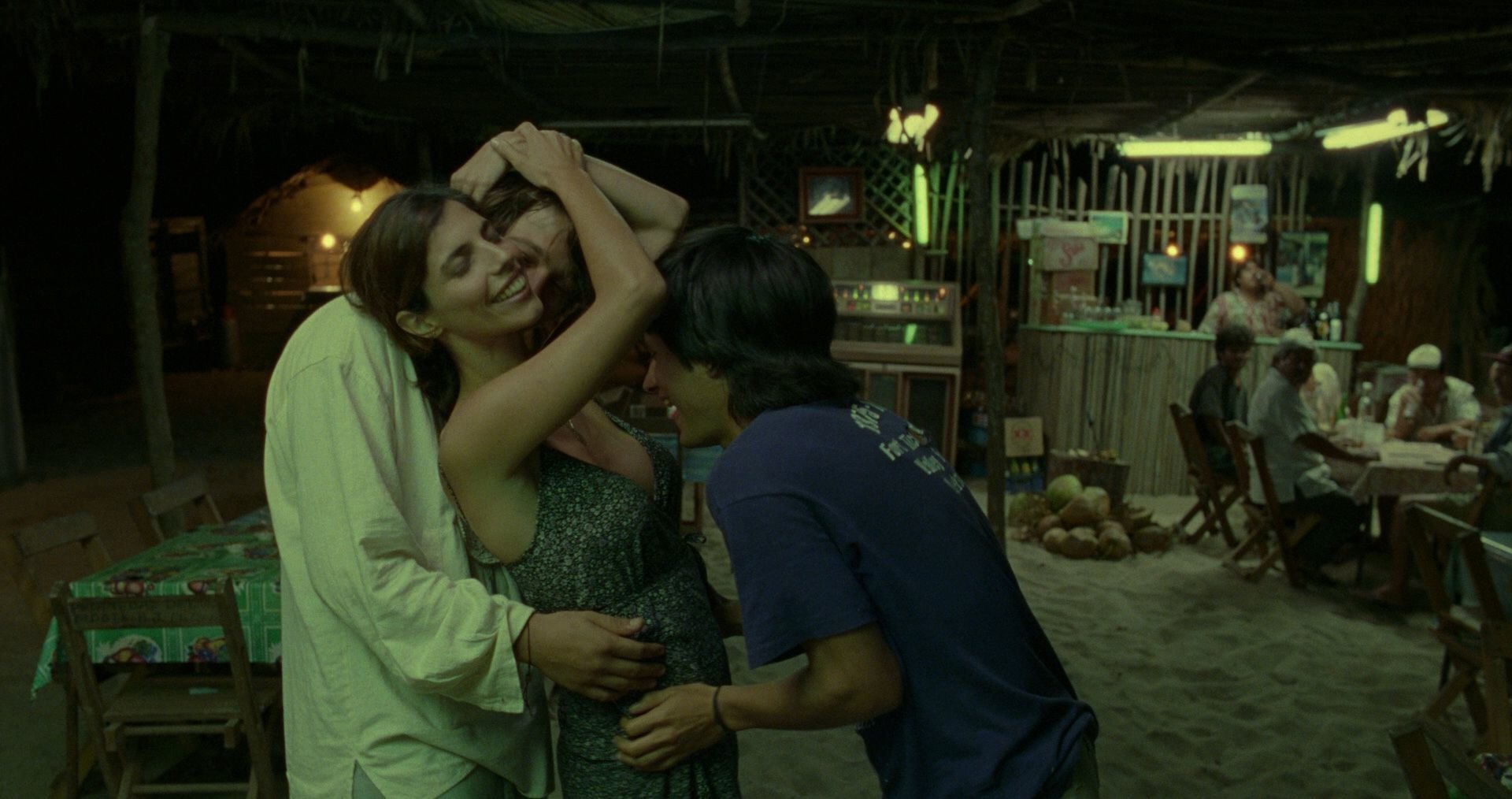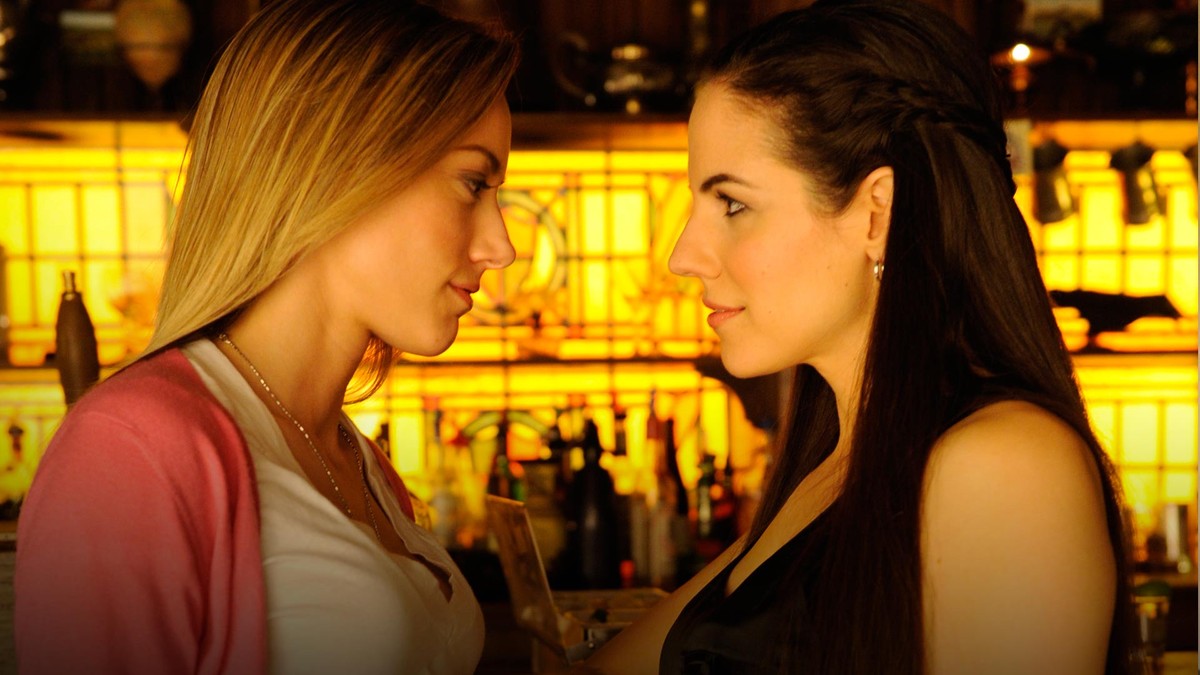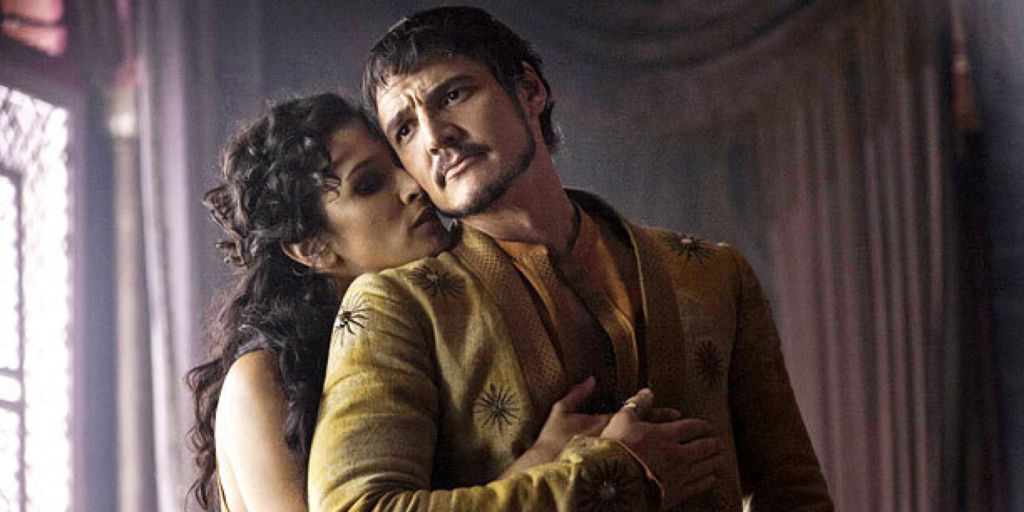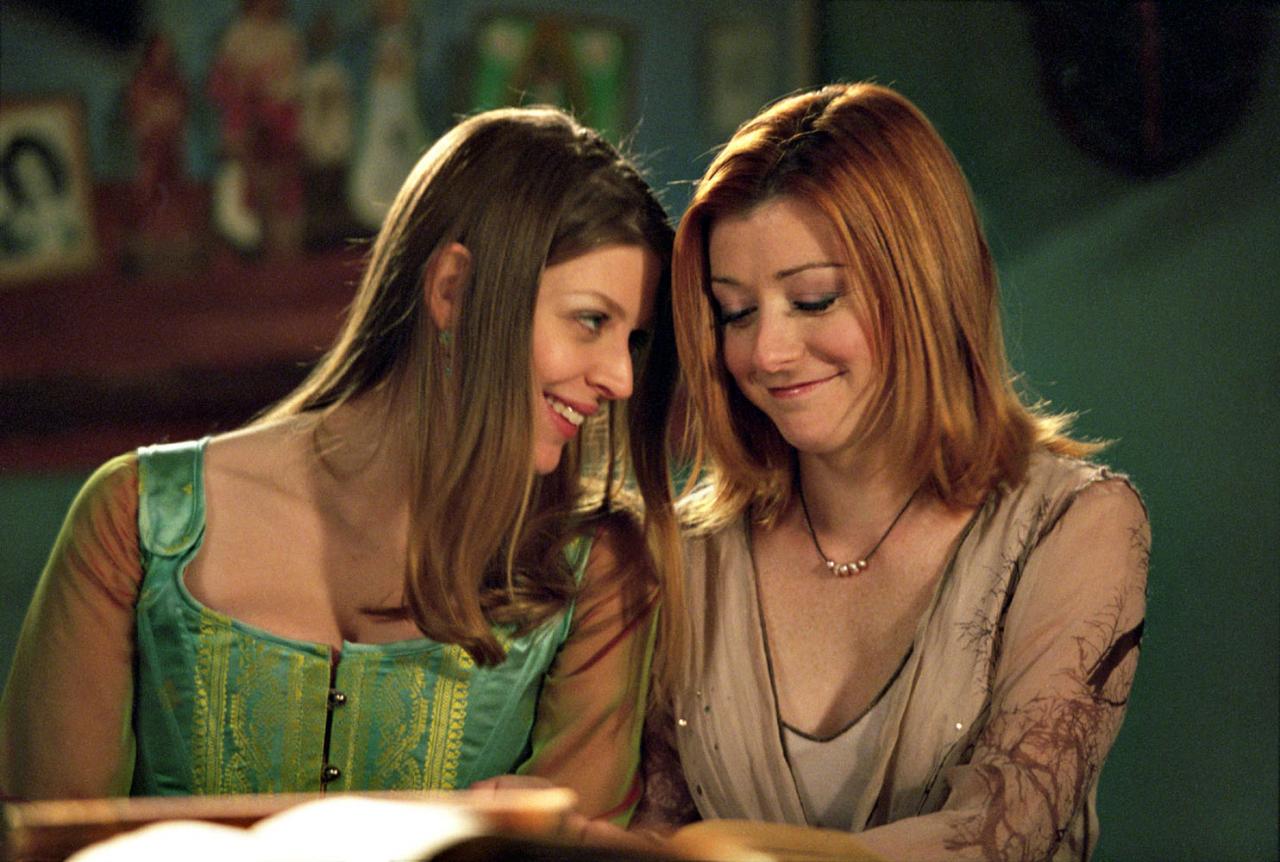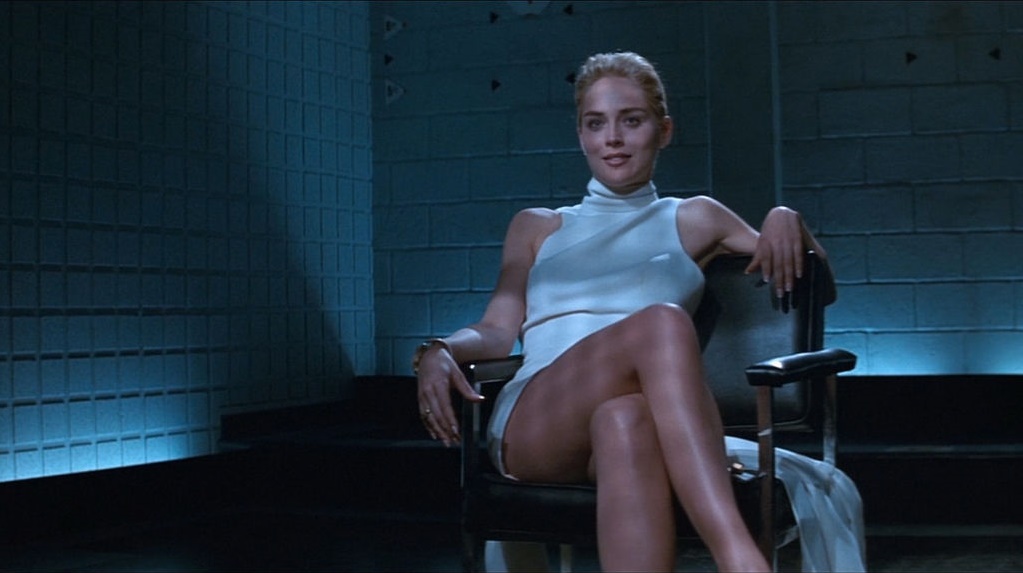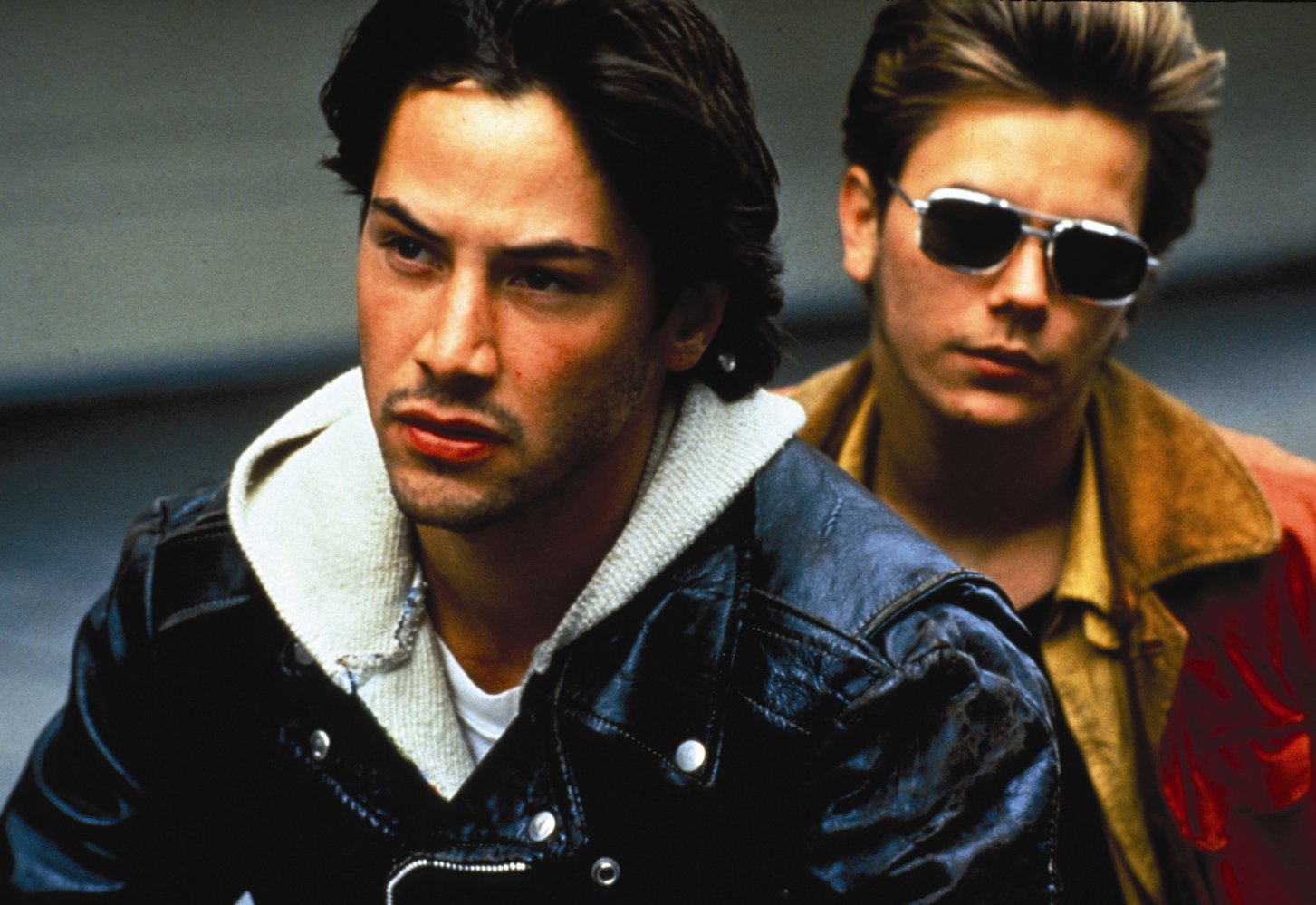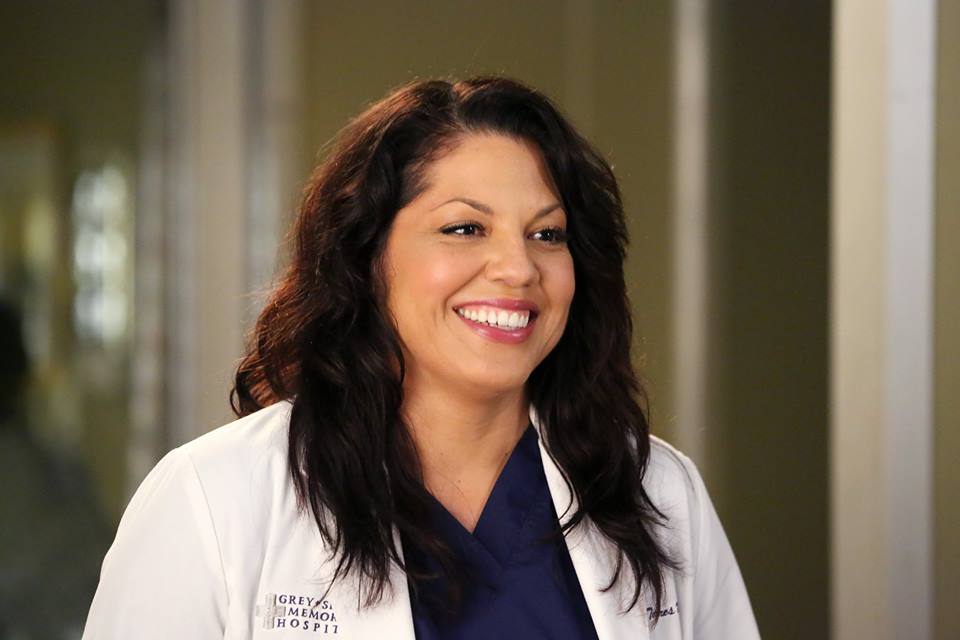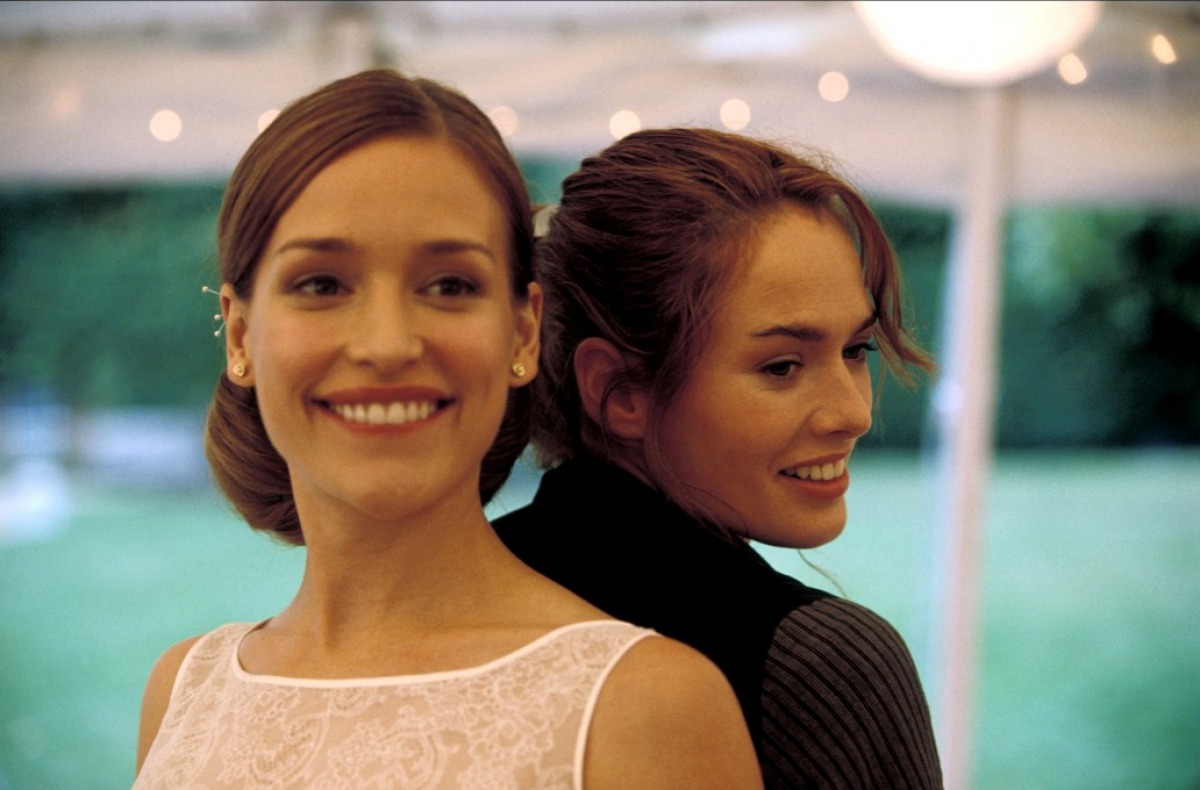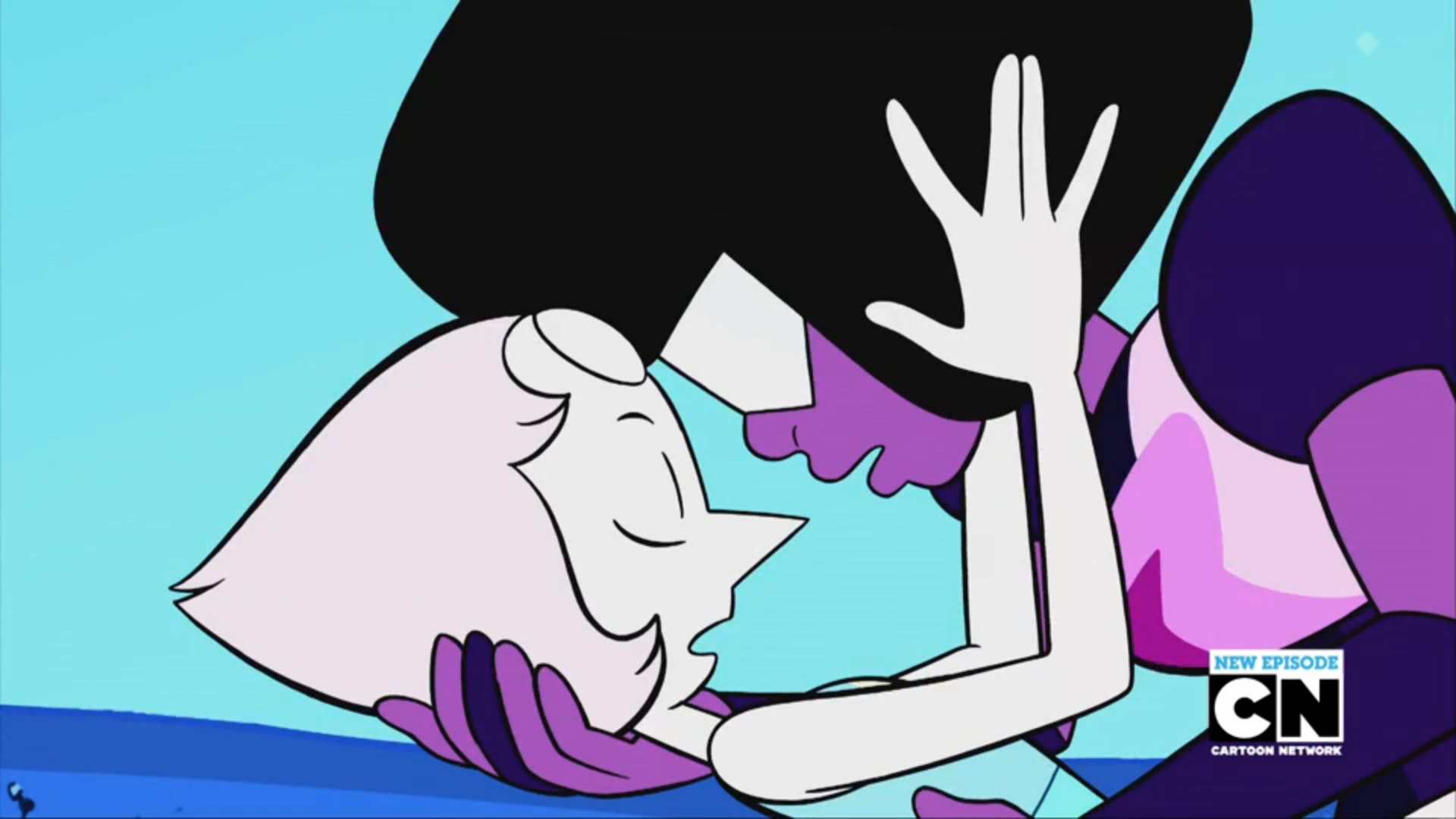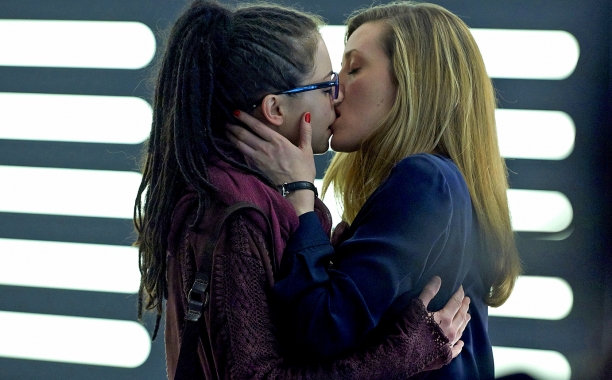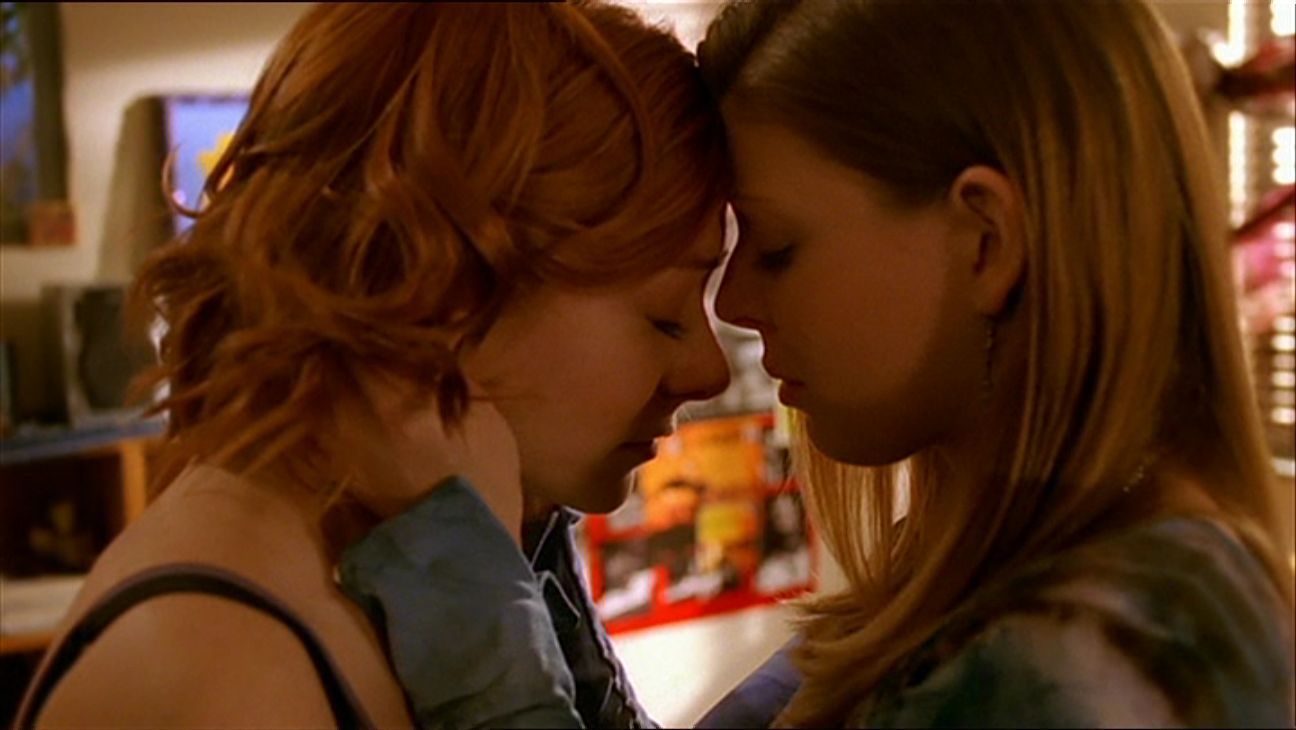This post written by staff writer Brigit McCone appears as part of our theme week on Bisexual Representation. | Spoilers ahead.
How is bisexuality defined? If it is defined by sexual performance, then all the protagonists of the romantic comedies I Love You Phillip Morris and Kissing Jessica Stein must qualify: Steven Russell fathers a child with his wife while taking male lovers, while Jessica Stein and Helen Cooper are heterosexually active women who embark on a sexual relationship with each other. Yet, if bisexuality is defined by self-identification or by profound desire for both genders, then arguably none of these characters qualify: Steven Russell identifies exclusively as gay and appears passionless in his marriage; Jessica Stein is identified as straight even by her female lover, and cannot sustain sexual desire in her lesbian relationship; Helen Cooper, while attracted to men and women, appears emotionally detached and utilitarian towards all her male lovers, finding desire for romantic commitment only with women.
Both films, then, arguably fit a wider cultural pattern of bi erasure, suggesting that bisexual characters must “resolve” themselves as either gay or straight. I would argue, however, that what marks I Love You Phillip Morris and Kissing Jessica Stein as something more nuanced and interesting than another tale of “inauthentic” bisexuality, is the subtlety with which they examine all sexual orientations as limited by our internalized need to socially perform.
In I Love You Phillip Morris, Steven Russell (Jim Carrey) is introduced as a pillar of the community, a proud family man, an active member of his church and a policeman. The film suggests that Steven’s discovery that he was adopted, and the trauma of rejection by his birth mother, are the psychological triggers driving his powerful need for social approval, which includes suppressing the fact that he is gay. When driving back from a rendezvous with a male lover, a collision destroys his sports car and puts him in a neck-brace. Shorn of his status symbol and physically restrained, Stephen is mentally released and resolves to come out of the closet — the first of many moments when the physical restraint of jail or hospitalization triggers emotional liberation.
It may be controversial even to consider Steven as a potentially bisexual character, when his marriage is dictated by the demands of a closeted life, in a conservative culture of compulsory heterosexuality. Yet his coming out of the closet does not instantly transform him from “living a lie” to authenticity. Rather, he plays another social role, sporting extravagant status symbols and elaborate grooming to win the approval of the gay community, discovering that “being gay is really expensive.” As Steven turns to fraud to finance his extravagances, the film has fun with the idea that he has been psychologically prepared for the socially unacceptable role of con man by the socially demanded con of compulsory heterosexuality. As both wife Debbie (Leslie Mann) and boyfriend Jimmy (Rodrigo Santoro) unite to chase Steven and hold him accountable, we see that Steven’s compulsion to perform socially has been the driving force shaping both relationships, gay and straight.
Once in jail, I Love You Phillip Morris plays out like a rom-com spin on The Shawshank Redemption. Like The Shawshank Redemption‘s Andy Dufresne, Steven finds purification and transcendence by the power of his human will to cling to hope of escape, resisting the mental pressures of institutionalization. But where Andy’s sexual aspirations were represented only by a Rita Hayworth poster on his wall, Steven finds true love behind bars in Ewan McGregor’s winsome Phillip Morris. The famous Shawshank Redemption scene where Andy snatches an illicit moment to play Mozart over the PA system, is paralleled by a slow dance between Steven and Phillip to the strains of “Chances Are,” against a background of escalating prison brutality. Yet after emerging from prison, Steven’s lying and con-artistry rapidly resume, eventually alienating Phillip. Steven has been more deeply institutionalized by the society around him than he ever was by jail. As the film ends, he runs for freedom yet again, the dream of a perfectly realized love hanging over him as clear and yet elusive as a penis-shaped cloud.
As a representation of a bisexual woman, Kissing Jessica Stein‘s Jessica Stein (Jennifer Westfeldt) is a disappointment. Even after enjoyably consummating her relationship with Helen (Heather Juergensen), Jessica confesses to finding sex with a woman “all wrong.” However, if we accept Jessica as straight, made no more bisexual by her ability to perform sexually with a woman than Steven Russell is by his, then Kissing Jessica Stein (written by Westfeldt and Juergensen) changes from a bisexual rom-com into something else: a portrait of the price that the social institution of compulsory heterosexuality takes on a straight woman. Jessica is drawn to Helen by a Rilke quotation in her personal ad: “Only someone who is ready for everything, who excludes nothing, not even the most enigmatical, will live their relation to another as something alive.” It is Jessica’s heterosexuality that is characterized by the film as a space of deadness, inertia, and monotonous repetition, urgently in need of radical renewal and dismantled preconceptions.
The film opens with Jessica’s mother busily matchmaking her daughter in a synagogue. The men around her are reduced to a list of “suitable” qualities, from physical appearance to wealth and availability; Jessica is urged to force her feelings into finding their suitability attractive. Later, we see her endure a round of dates, each following the same formula of dinner and interrogation, and even taking place in the same restaurant. Jessica’s love life has become institutionalized. We also learn that she has already had a serious relationship with Josh (Scott Cohen), who will emerge as her final love interest. This earlier relationship failed because of Jessica’s intolerance over Josh’s perceived lack of ambition. Everything that we learn about Jessica’s loyalty in friendship indicates that she would be unfailingly supportive to a friend who was struggling in their career. But Jessica’s fixed, socialized preconceptions about the role of boyfriends or “husband material” mean that her lover must perform success, to become the expression of her own ambitions and perfectionism. It is heterosexual connection, not bisexuality, that Josh sees Jessica as “clearly not open to.” In a brilliantly acted and moving scene, Jessica’s mother (Tovah Feldshuh) reveals that it is this perfectionism that made her fear for her daughter’s happiness, while surprising her by accepting her lesbian lover.
This, then, is the role that bisexuality plays in Kissing Jessica Stein: the renewal of Jessica’s heterosexuality through the radical elimination of her romantic preconceptions, and through the thought experiment of reimagining female friendship as romance. Only in the ethics of female friendship, with its emphasis on unconditional loyalty, openness, and mutual support, does Jessica find the proper mental attitude from which to approach relationships, to live them in Rilke’s words as “something alive.” In a comic scene, Jessica pushes Helen towards a male lover because “he’s a sure thing” and Jessica would feel guilty if she was unable to perform. While this may be taken as yet additional proof that Jessica does not take Helen seriously as a romantic partner, it equally shows a classic female friendship’s ideals of unselfish support, that could even encompass a polyamorous relationship. Where are Jessica’s limits, once she releases herself from the narrow, social roles of compulsory heterosexuality? Is it ethical to reduce bisexuality to a plot device for exploring heterosexual frustrations? But, how else could those frustrations have been tackled?
Helen Cooper is introduced to us juggling male lovers: a married man whom she can call if she’s “hungry,” an intellectual she can call if she’s “bored,” and a younger, sexually enthusiastic messenger boy to call if she’s “horny.” This utilitarian attitude to her lovers is matched by a consistent emotional detachment in her dealings with them. Yet her gay friend Martin (Michael Mastro) uses the fact of her promiscuity alone to define her as straight, denying that she could feel lesbian attraction “because you have had more cock than I have, and I was a big whore in the 80s.” His denial of the possibility of bisexuality seems to stem from his need to assert his gay identity; bi erasure and biphobia are damaging and negatively impact and ignore bisexual people’s realities.
As Helen advertises for a lesbian lover, the women whose phone messages she receives seem trapped in fixed preconceptions of their own, as narrow as the expectations of the men that Jessica dates. They seek Helen as an emotional savior or to mother a child with them, rather than expressing openness to Rilke’s exploration of “something alive.” It is, perhaps, precisely Jessica Stein’s straightness that forces Helen to seduce her gradually and through the medium of friendship. In this combination of friendship with sexual allure, Helen seems to find committed romance for the first time. After she and Jessica break up, Helen moves into an apparently committed relationship with another woman, bickering good-naturedly over their sleeping arrangements before going for a friendly brunch with Jessica. Does this indicate that Helen has discovered her orientation as a lesbian? Is she a bisexual woman (since the gender of a person’s current romantic partner doesn’t determine their sexual orientation)? Or is she a bisexual woman who, like Jessica, was limited in her romantic satisfaction with men by her inability to see them as friends? Does it matter?
Surely, if there is a message to Kissing Jessica Stein and I Love You Phillip Morris, it is that social pressures and imposed roles must be unlearned before romantic fulfillment can be achieved. So then, at what point does a label become a limitation?
See also at Bitch Flicks:
LGBTQI Week: Kissing Jessica Stein
Brigit McCone is worried that her dating life may be becoming indescribably monotonous and unrenewed. She writes short films and radio dramas. Her hobbies include doodling and staring at nature documentaries.
